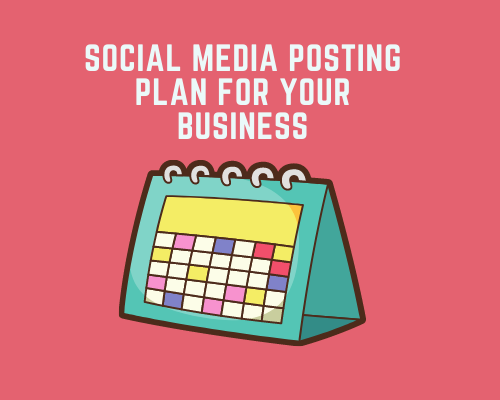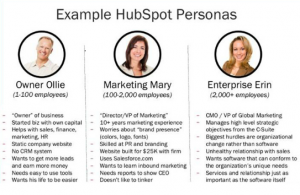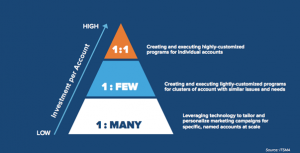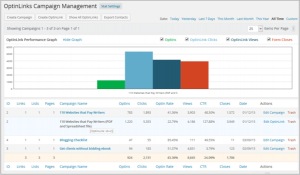
Starting to post on your social media is always the hardest thing to do. You fret over the right words, colours, images, timing and content. In fact, 50% of entrepreneurs said in my Instagram poll that their biggest concern was generating content for their social media.
A social media posting plan takes away this stress of starting something new. If you have a plan of what you’re going to post, you don’t have to start from scratch every time you have to think of a post. You have a handy plan that you can refer to. In this blog, I’m going to talk about what that plan can look like.
A social media posting plan is also called a ‘social media calendar’. If you Google the term ‘social media calendar’, you will be inundated with results! There will be tonnes of articles that give ideas of what to put in your calendar and an equal amount of websites which give away a free social media calendar. My recommendation: make your own social media calendar first, and then look for ideas.
Social media posts are not just random pieces of content; they are an extension of your business. Posting festive greetings for every holiday is not going to help you stand out from the crowd, but posting YOUR content is. So, put some thought into what you’re going to post on your profiles.
Making a social media posting plan
Before you put in the content, create a framework for social media posts. What you put in the framework will also depend on which platform you are creating it for. I like to plan these 4 things beforehand.
- Frequency of posting
- Days and times that you will post
- The objective of each post
- Format of post
The frequency, days and time of the posts will depend on your specific audience. You may already have an insight into when your audience is likely to be on social media. E.g. if they are working, then they may check their social media early in the day, during their lunch breaks or when they are off work. Knowing this will help you to plan your posting schedule.
The objective of each post has to be clear. Are you posting to share knowledge or letting them know about your products? Is the post asking them to engage or is it informational only? When planning your calendar, be sure to include a mix of posts. Asking your audience to engage in every post will be expecting a bit too much, so mix that with some posts that are easy to consume.
In the same way, mix up the formats of your post. Video posts do very well on every platform, especially when featuring a person. But videos are time-consuming to create. In addition, posting the same format on a profile can get monotonous. So add a few images posts, animated video, carousel and text posts. If the social media platform has a format that is trending like Reels or Stories, then be sure to use that as well. Trending formats are always prioritised by the platform, so your reach will increase.
Creating templates for your plan
By now you already know what your weekly plan is going to look like. You have an idea of the topics you will post about and the formats. So you can go ahead and create templates for each of those posts. Creating templates will help you to finalise the colours, fonts, images, music etc. in one go. Then, every week, you can just put in the content into the template.
When creating the templates, think about the look of your profile. It is up to you to pick designs that are cohesive or random. There is no right answer; it depends on your brand. But keep in mind that random posts are harder to create as you will have to design them from scratch every time. Go back to my point about what resources you have, to see whether this is possible for you. If you have picked standard templates, you can still vary them by using different colours for every post.
A few things to keep in mind when creating templates:
- Add your logo to the template
- When creating templates for multiple social media platforms, keep in mind the difference in size ratios. I usually create all my posts in 1:1 as that works on all platforms and it saves me having to create multiple versions of the same post.
- When using images, videos or music from the internet, check the copyright-terms for them to ensure that you have the rights to use it in your content.
Scheduling your posts
It is a good idea to create your posts in advance and work on them together. When you’re in the creative frame of mind, you will be able to churn out posts much faster than if you work on them piece-meal. You will also be able to have an overview of all the posts and see whether they work well together. I usually take out an hour in a week to create my posts.
Once your posts are done, you can schedule them in advance. This means that you upload your media, put in the caption, hashtags and relevant links in the post and schedule it to be posted on a specific day and time. This is very helpful to free up your time on a daily basis. You won’t have to worry about finding all this information every day to post on time. There are many scheduling services available, but I prefer to use Facebook Creator Studio for my Facebook and Instagram.
Revisiting your plan
The last aspect of a social media calendar is to measure its performance. The most common way to measure the performance of posts is through the reach and engagement (likes, comments, shares, saves).
The reach will give you an idea of what kind of posts the platform prefers. E.g. when you post a link to a YouTube video, your reach will be lower; but when you upload the same video on the platform itself, your reach will jump.
The engagements will help you understand what your audience thinks of the post. Bear in mind that less than 5% of your audience is seeing your posts. So when monitoring the engagement, assess it based on the 5%, rather than 100% of your audience.
Once you have an understanding of how your posts are performing, you can make adjustments to the posts to improve the posts. Do not change your posts too much though as your audience follows you for your content. You want to stick to your objective while optimising the way you present the information.
This was my recommendation for planning and executing your social media calendar. In the next blog, we’ll take a look at a specific platform – Facebook – and see what we can do there to improve the page performance.
Digital & Social Articles on Business 2 Community
(11)









